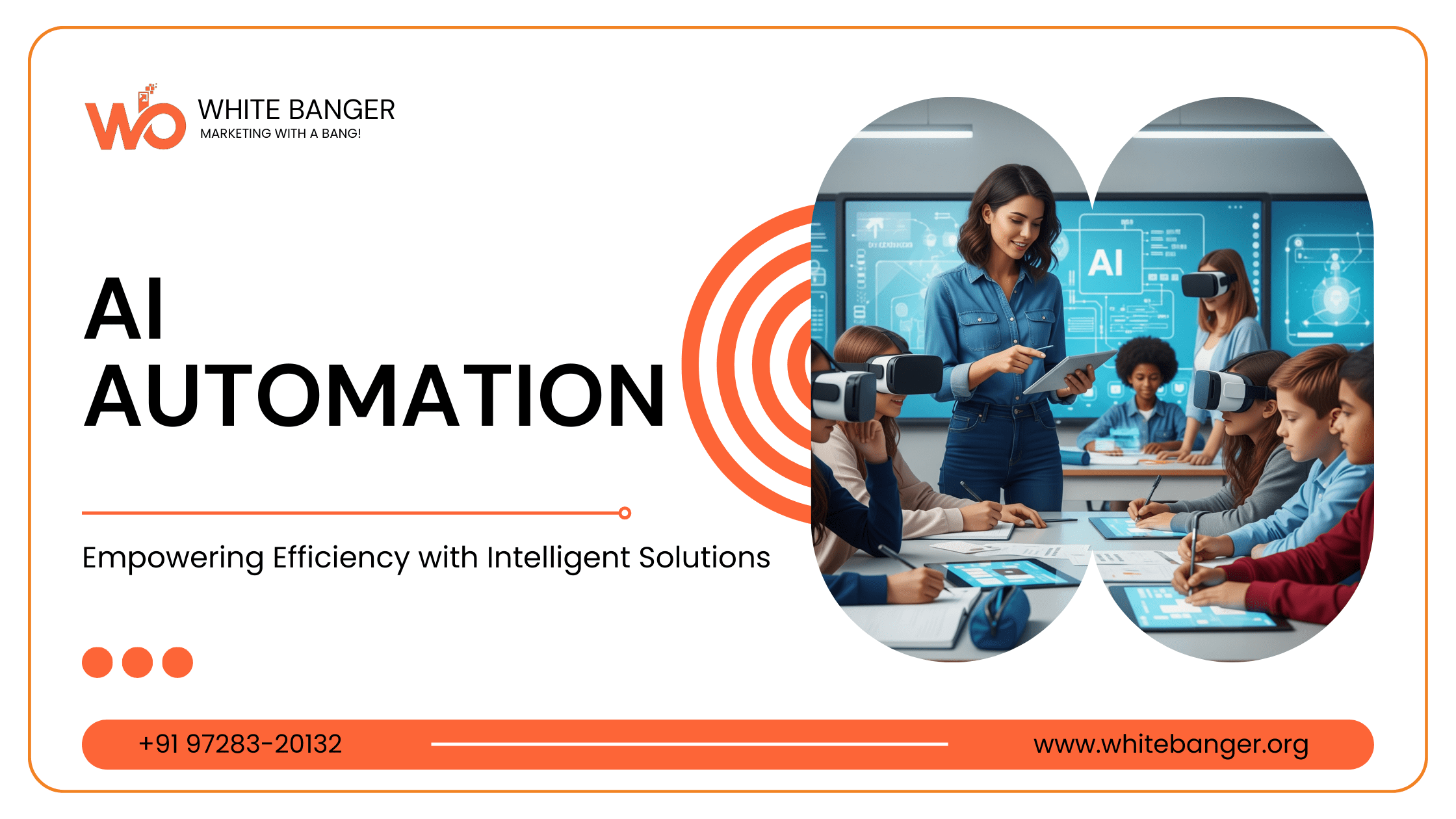
AI Automation vs Traditional Automation: Key Differences
In the rapidly changing business world today, automation and AI have become essential for improving efficiency, reducing costs, and increasing productivity. However, automation cannot be applied in the same way for every situation. Over the years, it has evolved from traditional, rule-based automation to intelligent, AI-driven automation.
For business leaders, professionals, and tech enthusiasts, understanding the difference between AI automation and traditional automation is crucial in making informed technology investments. At White Banger Academy’s AI Automation Course, we focus on equipping learners with the skills to navigate both approaches effectively, ensuring they are future ready.
What is Traditional Automation?
Traditional automation refers to using predefined rules, scripts, or workflows to perform repetitive tasks without human intervention. It operates on a clear “if this, then that” logic, performing repetitive and predictable tasks with high consistency and speed.
Examples include invoice processing workflows, email responses based on predefined conditions, and manufacturing assembly lines following strict protocols. Tools like Zapier and Integromat (formerly Make) are widely used for rule-based automation in businesses.
At White Banger Academy, we teach how traditional automation systems are implemented in industries, preparing learners for roles in process automation, manufacturing, and business operations.
Traditional automation excels in:
- Handling simple, repetitive tasks.
- Executing fixed processes without variation.
- Reducing manual work through consistent rule-following.
- However, it is limited by its static nature. Changes in processes or inputs require manual updates or reprogramming, and it cannot adapt to new data or unexpected scenarios.
What is AI Automation?
AI automation integrates artificial intelligence — such as machine learning, natural language processing, and computer vision — into automation systems. Unlike traditional automation, AI workflow automation can learn, adapt, and make decisions based on data and patterns.
Instead of simply executing pre-programmed tasks, AI for automation can handle complex, dynamic, and unpredictable processes.
Key characteristics of AI in automation include:
- Learning from data to improve performance.
- Understanding and responding to natural language.
- Handling unstructured data like images and text.
- Making intelligent decisions and predictions.
For instance, an AI-powered automation solution like a customer support chatbot (e.g., ManyChat or Tidio can understand diverse queries, provide relevant answers, and escalate complex issues, continuously improving through interaction data. Tools like Jasper AI and Writesonic also empower businesses with AI-driven marketing automation and content creation.
White Banger Academy’s AI Automation Course covers these capabilities in depth, helping learners master tools and frameworks used by industry leaders, including AI marketing automation platforms.
Key Differences Between AI and Traditional Automation
Aspect | Traditional Automation | AI Automation |
Flexibility | Fixed rules; rigid and static | Adaptive; learns from data and changes |
Learning | No learning; requires manual updates | Continuous learning and self-improvement |
Complexity | Best for simple, repetitive tasks | Handles complex, data-driven tasks |
Decision-Making | Follows predefined instructions | Makes intelligent, data-based decisions |
Handling Variability | Struggles with unexpected inputs | Manages unstructured and variable data |
Setup & Maintenance | Faster setup; manual maintenance | Requires training; self-updating |
Use Cases | Invoice processing, automatic emails | Customer service bots, predictive analytics |
Benefits of AI Automation Over Traditional Automation
- Adaptability: AI can quickly adjust to changes or problems without stopping the process.
- Personalization: AI tools can create custom content and offers based on each user’s behavior (e.g., HubSpot)
- Efficiency: AI gets better over time, reducing mistakes and making processes faster.
- Scalability: AI can easily handle large amounts of data and complex tasks.
- Better Customer Experience: AI understands language, gives smarter answers, and can predict what customers need.
At White Banger Academy, we train students to leverage these advantages in real-world projects, bridging the gap between theory and practice.
When to Use Traditional Automation vs AI Automation
Choose Traditional Automation When:
- The task is repetitive, rule-based, and predictable.
- There is minimal variation in process inputs.
- You need a cost-effective solution for straightforward workflows.
Choose AI Automation When:
- The task involves decision-making and variable data input.
- You need personalization, prediction, or adaptability.
- Processes change frequently or require continuous improvement.
Our curriculum at White Banger Academy’s AI Automation Program ensures learners know when to choose traditional methods and when to deploy AI-driven solutions.
The Future of Automation: A Hybrid Approach
In many industries, the future isn’t about choosing between AI automation and traditional automation — it’s about combining them.
Traditional automation can handle predictable, repetitive tasks, while AI can step in for complex decision-making and dynamic scenarios. This hybrid model of AI and automation ensures both efficiency and adaptability, helping businesses maximize productivity while staying flexible.
At White Banger Academy, we prepare students for this hybrid future, enabling them to design automation systems that merge the best of both worlds.
Final Thoughts
While both AI automation and traditional automation aim to improve efficiency, their methods, capabilities, and applications are very different. Traditional automation is rule-based, cost-effective, and ideal for simple workflows. AI in automation, on the other hand, is adaptive, data-driven, and capable of handling complex, changing environments.
As businesses move towards digital transformation, understanding these differences will help in choosing the right approach — or the right combination — to meet specific goals. White Banger Academy’s AI automation Training empowers learners to make these decisions confidently and strategically.
White Banger – Practical Skills. Real Growth. Bright Futures.
📞 Call/WhatsApp: +91-9728320132
🌐 Website: www.whitebanger.org
📍 Location: 1st Floor, Side Building of Jeevan Jyoti Hospital, Karnal Road, Kaithal, Haryana, India (136027)
📧 Email: prikshit@whitebanger.org
